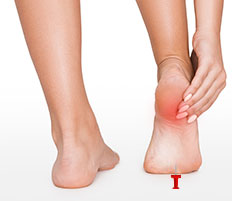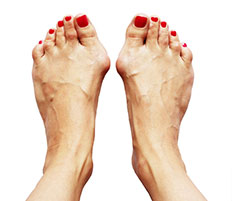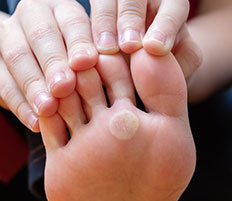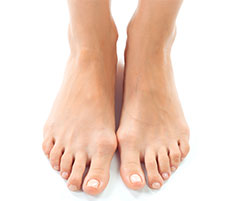INGROWN TOENAIL
Pacific Podiatry
Valerie Valdivieso-Diaz, DPM
Podiatry located in Miami, FL
Ingrown toenails are a common problem that usually affects the big toe. The corner or side of the toenail starts to grow into the soft tissues around the nail, causing discomfort, pain, swelling, and inflammation. Sometimes an ingrown toenail becomes infected, and if left untreated the infection can spread to the bones underneath and cause serious problems. Valerie Valdivieso-Diaz, DPM, of Pacific Podiatry in Miami is an experienced podiatrist who specializes in treating foot problems, including ingrown toenails. If you’re having issues with an ingrown toenail, call the clinic today or book an appointment online.
Ingrown Toenail – Q&A
How do I prevent ingrown toenails?
Ingrown toenails are frequently due to preventable causes like wearing shoes that squash your toes, cutting toenails too short, or cutting into the side of your nails when you trim them. That means taking steps to avoid these triggers will help your toenails to grow as they should. To prevent ingrown toenails, you should always:
- Keep your toenails the same length as your toes
- Avoid shaping your toenails when you trim them, just cut straight across
- Avoid wearing shoes that pinch your feet or put pressure on your toes
- Protect your feet from injuries with steel toe-caps if you’re at risk
Check your feet regularly so you spot any signs of ingrown toenails early and seek treatment to avoid infection.
What are the treatment options for ingrown toenails?
If you spot an ingrown toenail, you may be able to treat it yourself. Soaking your foot in warm water for 20 minutes three or four times a day helps reduce tenderness and swelling, after which you can put clean cotton or dental floss beneath the nail where it’s starting to grow into your skin.
Use an antibiotic cream to prevent infections from setting in, and wrap your toe in a clean bandage. Wear sensible shoes or slippers to keep pressure off your toes, and take an over-the-counter painkiller to help ease any discomfort.
When should I see a doctor about my ingrown toenail?
If your ingrown toenail isn’t improving after treating it yourself, if your toe is very red and painful, or if the nail starts to leak pus, you should visit Dr. Valdivieso-Diaz for an assessment. You should also seek medical advice if you have diabetes, as diabetic foot problems can lead to more serious complications.
How will a doctor treat my ingrown toenail?
Dr. Valdivieso-Diaz may suggest one of several treatments. For mild cases, lifting and separating the nail from the skin into which it’s started to grow should solve the problem. In more severe cases, she may need to remove the affected section of toenail under local anesthetic.
For chronic cases, surgical, chemical or laser removal of the affected nail and nail bed underneath could provide a solution. Nail bed removal can affect regrowth, but Dr. Valdivieso-Diaz at Pacific Podiatry uses the KeryFlex® Nail Restoration System to restore the nail’s natural appearance. Infected toes may need a course of antibiotics or applications of antibiotic cream to help them heal.
If you have ingrown toenails, you won’t find a podiatrist with more expertise or a gentler touch than Dr. Valdivieso-Diaz of Pacific Podiatry. Call the clinic today or book an appointment online.
SERVICES WE OFFER
Patient Insurance
We are proud to participate with several government and commercial insurance plans. The Pacific Podiatry Center accepts most major insurance plans. We also welcome patients without insurance.
Please call our office at (786) 322-3111 and we will be happy to provide information regarding out-of-pocket costs.









